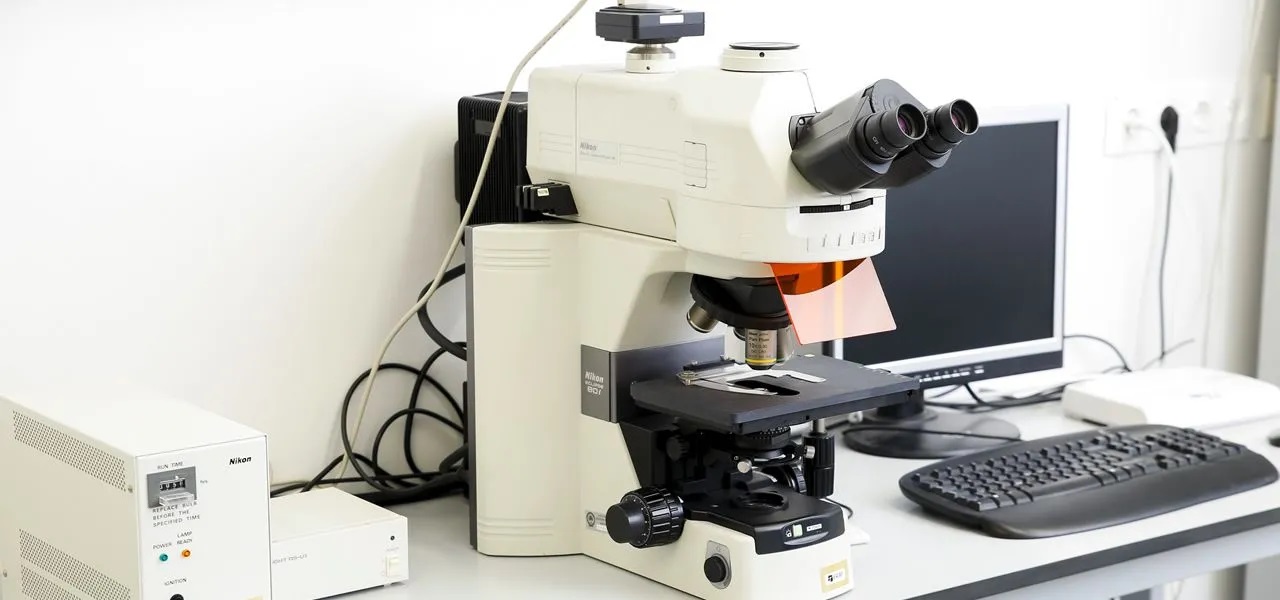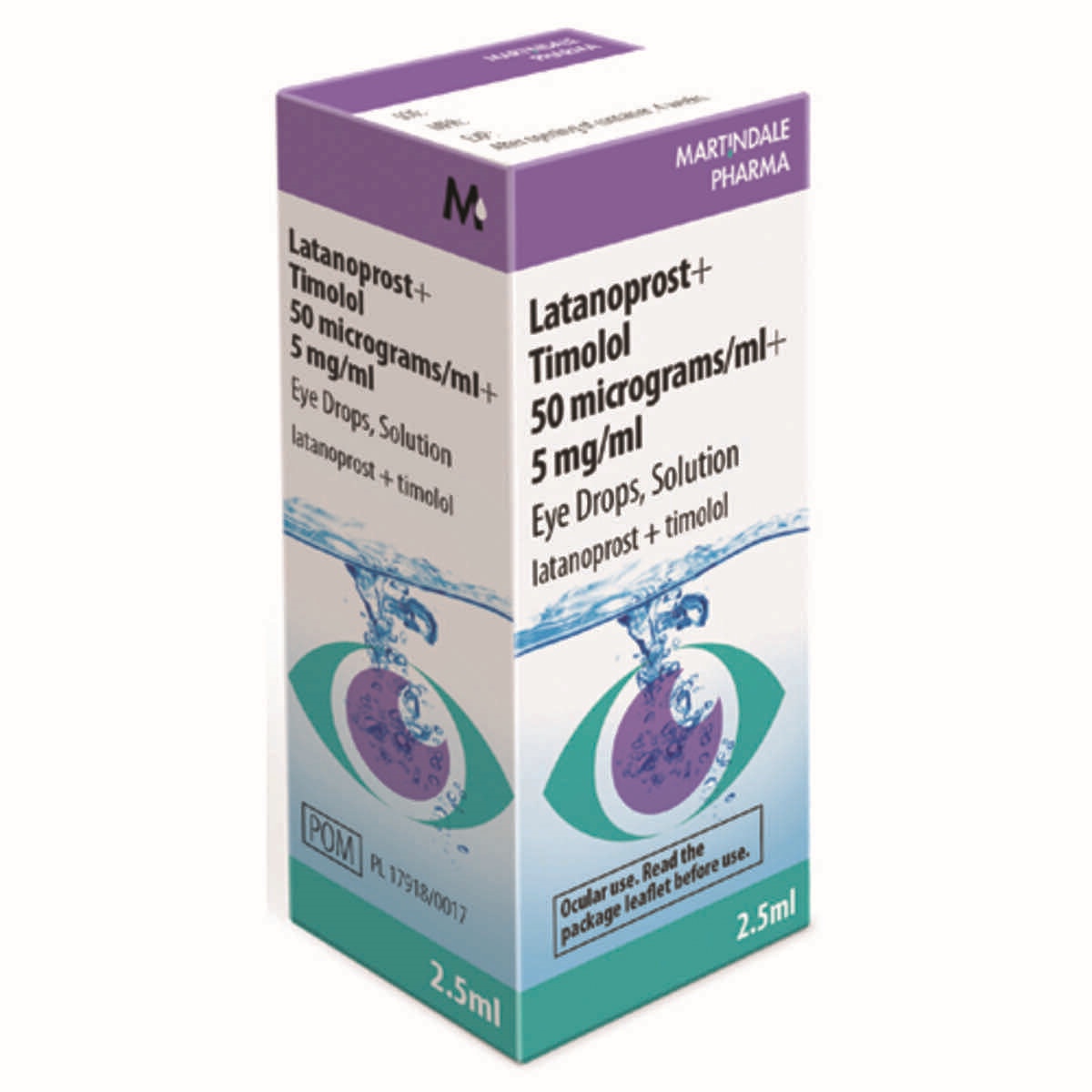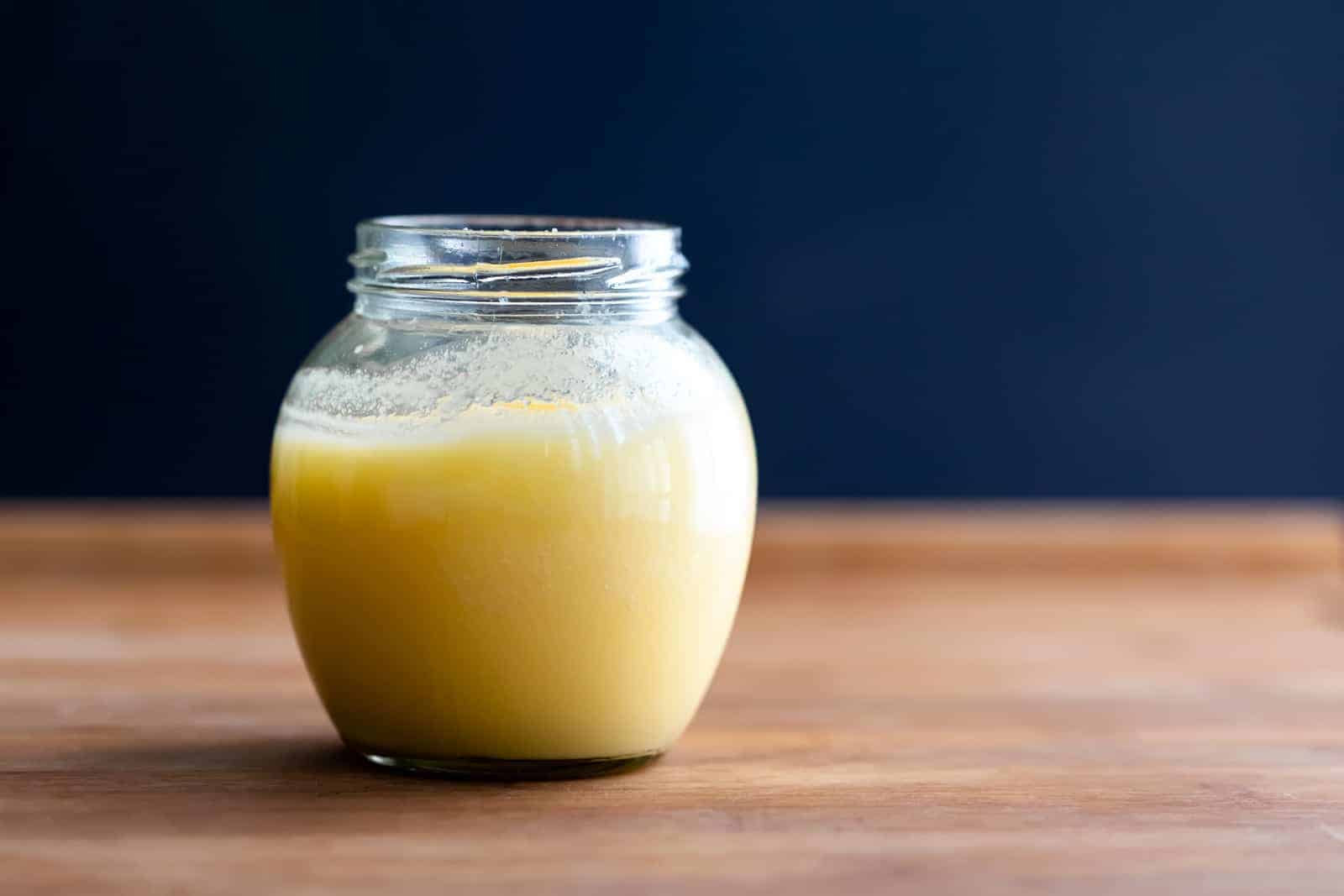

Articles
How To Store Silage
Modified: December 7, 2023
Learn how to store silage effectively with our informative articles. Discover tips and techniques for preserving and maximizing the nutritional quality of your silage.
(Many of the links in this article redirect to a specific reviewed product. Your purchase of these products through affiliate links helps to generate commission for Storables.com, at no extra cost. Learn more)
Introduction
Welcome to our comprehensive guide on how to properly store silage. Silage is a valuable feed source for livestock, made by fermenting and preserving high moisture crops such as corn, grass, or alfalfa. It is an essential practice for farmers to ensure the availability of nutritious feed for their animals throughout the year.
Proper silage storage involves a series of steps to ensure the quality and longevity of the feed. In this article, we will discuss the importance of silage storage, as well as the step-by-step process to achieve optimal results.
By following these guidelines, farmers can maximize the nutritional value of their silage, minimize spoilage, and improve overall herd health. Whether you’re a seasoned farmer or new to silage production, this article will provide you with the knowledge and insights necessary to store silage successfully.
Key Takeaways:
- Proper silage storage is essential for preserving nutrient content, preventing spoilage, and ensuring a consistent feed supply for livestock. From choosing the right storage structure to employing proper feedout techniques, attention to detail is key.
- Silage storage involves a series of interconnected steps, including harvesting, packing, covering, and monitoring. By following these steps, farmers can maximize feed resources, improve animal health, and contribute to the success of their farming operation.
Read more: How To Store Store-Bought Bread
What is Silage?
Silage is a feed made from fresh forage crops or crop residues that have undergone a process called ensiling. Ensiling involves the anaerobic fermentation of high-moisture crops, such as corn, grass, or alfalfa, to preserve their nutritional content for longer periods.
The process of ensiling begins by chopping the crops into small pieces, typically around 3/8 to 1/2 inch in length. The chopped forage is then tightly packed into a storage structure, such as a silo or bunker, where it undergoes fermentation. During fermentation, the oxygen within the silage is depleted, allowing for the growth of lactic acid bacteria. These bacteria produce lactic acid, which lowers the pH of the silage and inhibits the growth of spoilage microorganisms.
The production of silage offers several advantages for farmers. Firstly, it allows for the preservation of forage during times when fresh, high-quality feed may be scarce. Silage can be made during periods of peak crop growth and stored for future use, ensuring a reliable source of feed throughout the year.
Furthermore, the fermentation process in silage production enhances the digestibility and nutrient availability of the feed. The lactic acid bacteria not only create a more stable and palatable feed, but they also break down complex carbohydrates into simpler, more readily digestible compounds. This results in improved feed efficiency and better utilization of the nutrients by the animals.
Overall, silage provides a valuable means for farmers to maximize the use of crop resources, improve feed quality, and enhance animal performance. When stored properly, silage can retain its nutritional value for extended periods, offering a cost-effective and reliable source of feed for livestock.
Why is Proper Silage Storage Important?
Proper silage storage plays a critical role in ensuring the quality and nutritional value of the feed. Here are several reasons why it is important to store silage correctly:
- Preservation of Nutrients: Silage is a valuable source of nutrients for livestock, providing energy, protein, vitamins, and minerals. Proper storage techniques help preserve these essential nutrients, ensuring that the animals receive a balanced and high-quality diet.
- Prevention of Spoilage: If silage is not stored properly, it is susceptible to spoilage and degradation. Spoiled silage can lead to decreased intake, reduced feed efficiency, and compromised animal health. Proper storage techniques, such as packing, covering, and sealing the silage, help prevent spoilage and maintain its quality.
- Minimization of Dry Matter Losses: Dry matter losses occur during the ensiling process, and inefficient storage practices can exacerbate these losses. By using appropriate storage structures and techniques, farmers can minimize dry matter losses, maximizing their feed resources and reducing waste.
- Prevention of Mold and Mycotoxin Formation: Improperly stored silage can promote the growth of mold and mycotoxins, which are harmful to livestock. Mycotoxins can have detrimental effects on animal health, leading to reduced performance, fertility problems, and even toxicity. By following proper storage practices, farmers can minimize the risk of mold and mycotoxin contamination.
- Cost Savings: Proper silage storage can result in cost savings for farmers. By reducing spoilage and dry matter losses, they can make the most out of their feed resources, minimizing the need for additional feed purchases. Additionally, maintaining high-quality silage can lead to improved animal performance, reducing vet bills and maximizing profitability.
- Consistent Feed Supply: With proper storage, farmers can ensure a consistent supply of high-quality feed throughout the year. This is particularly important during periods of feed scarcity, such as droughts or winter months when fresh forage may not be available. A reliable feed supply is crucial for maintaining optimal animal health and productivity.
By implementing proper silage storage techniques, farmers can improve feed quality, reduce waste, and ensure the availability of nutritious feed for their livestock. It is an essential practice for any farmer looking to optimize animal performance, minimize feed costs, and achieve sustainable farming practices.
Step 1: Choosing the Right Silage Storage Structure
The first step in proper silage storage is selecting the appropriate storage structure. The choice of storage structure depends on factors such as the quantity of silage to be stored, the available space, and the equipment and resources available on the farm. Here are some common silage storage options:
- Silos: Silos are tall, cylindrical structures typically made of concrete or steel. They are a popular choice for storing silage, especially for larger farms. Silos provide vertical storage, which minimizes the surface area exposed to air, reducing spoilage. They can be either tower silos, which are filled from the top, or bunker silos, which are filled from the side.
- Bunker or Trench Silos: Bunker or trench silos are low-profile storage structures built into the ground. They are lined with plastic or concrete walls and are filled by compacting the silage in layers. Bunker silos are an efficient option for large-scale operations and offer easy access for feedout.
- Drive-over Piles: Drive-over piles are created by placing silage on the ground and compacting it with equipment. They are a cost-effective and flexible storage option for smaller farms. However, they have higher surface area exposure, which may lead to increased spoilage if not managed properly.
- Silage Bags: Silage bags are large plastic bags that are filled with chopped silage and sealed. They provide a temporary and portable storage solution, suitable for farms with limited space or seasonal silage needs. Silage bags offer good flexibility and can be placed close to the feeding area for convenience.
- Oxygen-limiting Silos: Oxygen-limiting silos, also known as oxygen barrier silos, are designed to reduce oxygen infiltration and thus, enhance silage preservation. By minimizing oxygen exposure, these structures help maintain the quality and freshness of the silage in the long term.
When selecting a silage storage structure, it is essential to consider factors such as the required capacity, cost-effectiveness, ease of use, and the specific needs of your farm. Consulting with experts or experienced farmers can provide valuable insights into choosing the most suitable option.
Remember, regardless of the type of storage structure you choose, proper maintenance and regular inspection are crucial. Ensuring structural integrity and addressing any damage or deterioration promptly will help preserve the quality of the stored silage. Additionally, proper site preparation, drainage, and runoff management should be considered to protect the silage from environmental factors and water damage.
Choose the right silage storage structure that aligns with your farm’s requirements, resources, and long-term goals. This will set the foundation for successful silage storage and help preserve the feed’s nutritional value and overall quality.
Step 2: Harvesting and Preparing the Crop for Storage
Once you have chosen the appropriate silage storage structure, the next step is to harvest and prepare the crop for storage. Proper harvesting and preparation are crucial for maintaining the quality and nutrient content of the silage. Here are some key considerations:
- Timing of Harvest: Timing is critical when it comes to harvesting forage crops for silage. The crop should be harvested at the optimal stage of maturity, typically when the moisture content is between 60% and 70%. Harvesting at this stage ensures the right balance of nutrients, digestibility, and fermentation potential.
- Chopping Length: The length at which the crop is chopped affects the packing density and fermentation process. Generally, the crop should be chopped into small pieces, around 3/8 to 1/2 inch in length. This ensures easy compaction, good consolidation, and enhances the fermentation process.
- Field Losses: Minimizing field losses is important to optimize the quantity of forage harvested and reduce waste. Field losses can occur due to improper harvesting techniques, such as leaving excessive stubble or allowing the forage to lay on the ground for long periods. Ensuring clean and efficient harvesting practices will help minimize field losses and maximize your silage yield.
- Moisture Content: The proper moisture content is crucial for successful ensiling. The forage should have a moisture content between 60% and 70% to facilitate fermentation. If the moisture content is too high, it can lead to excessive seepage and nutrient loss. If it is too low, the fermentation process may be hindered. Use a moisture tester to determine the moisture content accurately.
- Chemical Additives: Depending on the crop and conditions, you may need to use chemical additives to optimize fermentation and preserve the silage. Additives such as inoculants or acids can aid in lactic acid bacterial growth and inhibit the growth of detrimental microorganisms. Follow the manufacturer’s instructions and consult with specialists to determine if additives are necessary for your specific circumstances.
- Machinery Maintenance: Before harvesting, ensure that all the necessary machinery, such as forage harvesters and wagons, are in good working condition. Check for any worn or malfunctioning parts, and make the necessary repairs or replacements. Regular maintenance will help ensure efficient and safe operation and prevent any breakdowns during the harvest process.
By carefully considering these factors and implementing proper harvesting and preparation techniques, you can optimize the quality and nutrient content of the harvested crop. This will set the stage for a successful ensiling process and contribute to the overall success of your silage storage.
When storing silage, make sure to pack it tightly to exclude as much air as possible. This will help prevent spoilage and maintain the quality of the silage.
Read more: How To Store Basil From Grocery Store
Step 3: Packing the Silage
Packing the silage is a critical step in the ensiling process. Proper packing ensures maximum compaction, removal of oxygen, and promotion of anaerobic fermentation. Here are some important factors to consider when packing the silage:
- Packing Density: Achieving a high packing density is vital to maximize the amount of forage that can be stored in the given space. The more tightly the silage is packed, the more effective the exclusion of oxygen, which is essential for proper fermentation. Aim for a packing density of at least 14 to 16 pounds of dry matter per cubic foot, but strive for even higher densities if possible.
- Packing Technique: Use proper packing techniques to ensure uniform compaction throughout the silage mass. Avoid excessive layer thickness, as it can hinder proper compaction and air removal. Compress each layer thoroughly using a tractor or specialized packing equipment. Roll over the surface repeatedly in a systematic pattern to achieve even compaction.
- Avoiding Bridging and Bridging Gaps: Bridging occurs when the silage does not settle evenly, leaving air pockets and gaps within the mass. This can lead to inefficient compaction and exposure to oxygen. To prevent bridging, pay attention to the flow and distribution of forage during packing. Use equipment with proper weight and compaction capabilities to achieve even settling.
- Progressive Filling: As you fill the silage storage structure, aim for progressive filling. Adding the crop in small increments and packing each layer thoroughly before adding more helps maintain packing density and ensures adequate compaction throughout the silage mass. Avoid overfilling, as it can lead to excessive spoilage and inadequate sealing.
- Sealing Horizontal Surfaces: When using bunker or drive-over piles, pay close attention to sealing the horizontal surfaces to minimize air exposure. Use plastic covers or sheets to completely cover the exposed silage and extend them beyond the edges of the storage structure. Secure the covers tightly to prevent any air infiltration.
- Sealing Vertical Surfaces: For tower silos or silage bags, proper sealing of vertical surfaces is crucial to exclude air and promote anaerobic fermentation. Use oxygen barrier films or multiple layers of plastic to cover the walls of the storage structure. Seal any gaps, seams, or punctures to prevent oxygen penetration and spoilage.
Remember, achieving proper compaction and minimizing the presence of oxygen are key objectives when packing the silage. This step sets the foundation for successful fermentation and long-term preservation of the forage’s quality and nutrient content. Pay close attention to the packing process and ensure that all areas of the silage mass are thoroughly compacted and properly sealed.
Step 4: Covering and Sealing the Silage
After packing the silage, it’s essential to cover and seal it properly to protect it from air exposure and ensure a successful fermentation process. Covering and sealing the silage effectively will help maintain its quality and prevent spoilage. Here are some key considerations for covering and sealing the silage:
- Use a Plastic Cover: Cover the entire surface of the silage with a high-quality plastic cover. Choose a UV-resistant, tear-resistant, and airtight cover specifically designed for silage storage. The cover should be large enough to extend beyond the edges of the silage to provide a secure fit.
- Maintain Tension: Ensure the plastic cover is tightly secured to the silage surface to prevent air infiltration. Use sandbags, tires, or other heavy weights along the edges of the cover to maintain tension and prevent it from lifting or shifting due to wind or other environmental factors.
- Seal Vertical Edges: Pay close attention to sealing the vertical edges of the storage structure to prevent air entry. Use oxygen barrier films or multiple layers of plastic to cover the walls of the storage structure. Overlap the plastic layers and use strong adhesives or tapes to create an airtight seal.
- Seal Horizontal Surfaces: When storing in bunker or drive-over piles, it’s crucial to properly seal the exposed horizontal surfaces. Use additional plastic covers or sheets to completely cover the top layer of the silage, extending beyond the edges of the storage structure. Secure the covers tightly with sandbags or other appropriate weights.
- Inspect for Gaps and Punctures: Thoroughly inspect the cover for any gaps, punctures, or tears. Even small openings can allow air entry and compromise the silage quality. Repair any damages immediately using appropriate sealing materials to maintain an effective barrier against oxygen.
- Consider Oxygen Barrier Films: Oxygen barrier films can be used as an additional layer between the plastic cover and the silage surface. These films are specifically designed to reduce oxygen permeability and enhance silage preservation. They can be particularly beneficial for long-term storage or in regions with high fluctuation in temperature and humidity.
Properly covering and sealing the silage is crucial to create an anaerobic environment necessary for fermentation and preservation. A well-sealed silage helps maintain the integrity of the feed, preserves its nutritional value, and minimizes the risk of spoilage. Regularly monitor the covering and sealing for any damages or disruptions and address any issues promptly to maintain the quality of your stored silage.
Step 5: Monitoring and Maintaining Silage Quality
Monitoring and maintaining silage quality is an ongoing process that ensures the feed remains nutritious and free from spoilage throughout its storage period. Regular assessment and management are key to preserving the quality of the silage. Here are some steps to monitoring and maintaining silage quality:
- Monitor Silage Temperatures: Regularly monitor the temperature of the silage to detect any signs of heating or spoilage. Use a temperature probe or thermometer to sample various locations throughout the storage structure. Elevated temperatures may indicate microbial activity and potential spoilage. Take immediate action if higher temperatures are observed.
- Inspect for Visible Signs of Spoilage: Conduct visual inspections of the silage for any visible signs of spoilage, such as mold growth, off-odors, or changes in color. If you notice any abnormalities, investigate the cause and take necessary steps to prevent further spoilage. Removing spoiled sections can help preserve the quality of the remaining silage.
- Address Drainage and Moisture Issues: Monitor the storage structure for any signs of water accumulation or drainage issues. Excessive moisture can lead to nutrient leaching, increased spoilage, and reduced silage quality. Ensure proper site preparation, drainage systems, and cover impermeable surfaces with plastic to prevent water infiltration.
- Manage Rodent and Bird Infestations: Rodents and birds can cause damage to the silage, leading to spoilage and contamination. Regularly inspect the storage area for signs of infestation and take appropriate measures to prevent entry or eliminate these pests. Remove any exposed food sources or shelter that may attract them.
- Test Silage Quality: Periodically test the silage for its nutritional value and quality. Analyze samples for dry matter content, pH levels, and nutrient composition. Conducting regular silage analyses allows you to identify any changes in quality, adjust feed rations, and ensure proper nutrient supplementation for your livestock.
- Practice Proper Feedout Techniques: When it’s time to feed out the silage, follow proper feedout techniques to maintain silage quality. Remove silage from the storage structure in a consistent and organized manner to minimize air exposure. Avoid creating large exposed surfaces and use appropriate equipment to prevent excessive spoilage during feedout.
By actively monitoring and maintaining the quality of the silage, you can ensure that the feed retains its nutritional value and remain free from spoilage. Regular inspections, testing, and prompt action in addressing any issues will help maximize the utilization of your silage and benefit the overall health and performance of your livestock.
Step 6: Proper Feedout Techniques
Proper feedout techniques play a crucial role in maintaining the quality and minimizing spoilage during the feeding of silage to livestock. Implementing the right practices ensures that the stored silage remains fresh, nutritious, and free from contamination. Here are some key steps to follow for proper feedout:
- Maintain a Clean Feed Face: Start by removing only the necessary amount of silage from the face of the storage structure each day. Scrape off the exposed surface carefully, avoiding excessive disturbance to the remaining silage. Keep the face clean and straight to prevent air infiltration and spoilage.
- Minimize Exposed Surface Area: As you feed out the silage, strive to minimize the exposed surface area to reduce the risk of spoilage. Create a smooth and compacted face, ensuring a tightly packed edge to maintain an airtight seal. Avoid creating excessive gaps or voids in the silage mass, as they can promote spoilage.
- Control Feedout Rate: Control the rate at which silage is removed from the storage structure to match the feeding needs of the animals. Avoid removing more silage than what is required for a specific feeding period. This helps minimize exposure to air, prevents excessive spoilage, and maintains the quality of the remaining silage.
- Avoid Surface Contamination: Take precautions to prevent surface contamination during feedout. Do not drive equipment on or place other objects on the exposed silage. Avoid contact with soil, manure, or other potential sources of contamination. Clean and sanitize any equipment used for feedout to prevent the introduction of harmful microorganisms.
- Manage Feedout Rate and Consistency: Aim for a consistent feedout rate to maintain proper silage fermentation and minimize waste. Avoid sudden changes in feedout rates and ensure that the face of the silage remains stable and straight. Proper management of feedout improves efficiency, reduces spoilage, and helps optimize feed utilization.
- Feed First-In, First-Out: Adhere to the principle of “first-in, first-out” (FIFO) during feedout. Ensure that the oldest silage is used before newer batches. This helps maintain overall silage quality and prevents the accumulation of old, potentially spoiled silage at the bottom of the storage structure.
Following these proper feedout techniques will help preserve silage quality, minimize spoilage, and optimize feed utilization. By controlling the feedout process, you can effectively provide fresh and nutritious silage to your livestock while maximizing the value of the stored feed.
Read more: How To Store Victoza
Conclusion
Properly storing silage is crucial for ensuring a reliable and nutritious feed source for livestock. By following the steps outlined in this comprehensive guide, farmers can effectively preserve the quality and nutrient content of the silage, minimizing spoilage and maximizing feed utilization. Here are the key takeaways:
1. Choosing the Right Silage Storage Structure: Selecting the appropriate storage structure based on capacity, space availability, and resources is essential for successful silage storage.
2. Harvesting and Preparing the Crop: Harvest the crop at the optimal stage of maturity, chop it to the right length, and ensure the correct moisture content to promote proper fermentation.
3. Packing the Silage: Achieve high packing density by using proper techniques to maximize compaction and eliminate oxygen.
4. Covering and Sealing the Silage: Properly cover and seal the silage to protect it from air exposure, preventing spoilage and maintaining freshness.
5. Monitoring and Maintaining Silage Quality: Regularly monitor the temperature, inspect for spoilage signs, and manage drainage and pests to preserve silage quality.
6. Proper Feedout Techniques: Employ proper feedout practices to minimize spoilage and contamination during feeding.
By following these steps, farmers can ensure that their silage maintains its nutritional value, reduces waste, and provides a consistent and high-quality feed source for livestock. Regular monitoring, testing, and maintenance are essential throughout the storage period to address any potential issues promptly.
Remember, every step in the silage storage process is interconnected and crucial for overall success. From crop selection to feedout, attention to detail and continuous improvement are key. By implementing proper silage storage practices, farmers can maximize their feed resources, improve animal health and productivity, and ultimately, contribute to the overall success of their farming operation.
Frequently Asked Questions about How To Store Silage
Was this page helpful?
At Storables.com, we guarantee accurate and reliable information. Our content, validated by Expert Board Contributors, is crafted following stringent Editorial Policies. We're committed to providing you with well-researched, expert-backed insights for all your informational needs.














0 thoughts on “How To Store Silage”